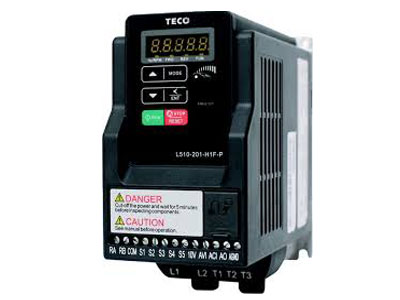Key Takeaway
You should not use a VFD if the motor’s load is constant and its output is unrestricted. In such cases, a VFD won’t offer efficiency benefits. Avoid using a VFD if your application requires very low or very high speeds, as VFDs may struggle to maintain efficiency at these extremes. Old motors may not be compatible with VFDs, so it’s better to upgrade first. If you have power quality issues, using a VFD can exacerbate these problems. Also, ensure the VFD and motor are close together; long distances can cause signal loss and inefficiency.
Situations Where VFDs are Inappropriate
VFDs are ill-suited for applications that demand constant speed operation without variation. Motors that operate continuously at 100% rated speed are better served by direct online starters, which are more cost-effective in such cases. Additionally, highly corrosive or explosive environments can compromise the integrity of a VFD’s electronic components, making them a risky choice unless specifically designed for such conditions.

Common Misapplications of VFDs
Deploying variable frequency drives (VFDs) in settings where the load conditions are consistent and do not require frequent adjustments might not always be the most cost-effective choice. For instance, consider a simple exhaust fan that operates continuously at a fixed speed. In such cases, the investment in a VFD, with its associated installation and maintenance costs, may not offer sufficient benefits to justify its use over simpler, more direct control methods.
Furthermore, VFDs can face challenges with high-inertia loads — those that take significant time to accelerate or decelerate. Such applications may induce stress on the VFD system, potentially accelerating wear and tear. This not only affects the durability and efficiency of the VFD but also adds complexity and potential downtime, which could be avoided with alternative solutions better suited to stable-load conditions.
When considering the application of a VFD, it’s crucial to assess whether the variable speed control provides tangible benefits in efficiency or process control that outweigh the costs. This evaluation will help in making an informed decision that aligns with operational needs and cost-effectiveness, ensuring that the technology is used where it truly enhances performance.
Alternatives to VFDs
When VFDs are not suitable, other control methods can be more appropriate. Soft starters provide a cost-effective solution for applications needing only a smooth start and stop without continuous speed adjustment. They limit inrush currents, reducing mechanical stress on motors and extending their lifespan. This makes them ideal for conveyor systems, pumps, and compressors where gradual start and stop is crucial.
In contrast, electromagnetic direct on-line starters are perfect for constant load applications. They offer simplicity and reliability with a straightforward design that ensures easy maintenance. These starters are widely used in industrial applications such as fan motors, blowers, and basic machinery where the motor operates at a consistent speed and load.
Understanding these alternatives ensures you select the most efficient and economical option for your specific needs. Soft starters are best for scenarios requiring minimal speed control, while direct on-line starters suit applications demanding continuous operation. This knowledge empowers you to make informed decisions, optimizing performance and cost-efficiency. As a newly joined engineer, recognizing the strengths of each method can significantly impact the success of your projects, leading to better resource management and improved operational efficiency. Always consider the specific requirements of your application before choosing the control method.
Case Studies of Improper VFD Use
In the realm of industrial automation, understanding the specific requirements of each application before installing Variable Frequency Drives (VFDs) is crucial. Take, for instance, a case from a manufacturing facility. They installed VFDs across all their pumps, expecting significant energy savings. However, they soon realized that their operation required constant speed. This misjudgment led to no energy savings and unexpectedly high maintenance costs. This scenario underscores a vital lesson for engineers: the necessity of thorough application evaluation.
Before implementing VFDs, engineers must analyze whether variable speed control is genuinely needed. In some applications, like pumps and fans, VFDs can offer substantial energy savings and operational flexibility. However, in operations requiring a consistent speed, VFDs may not only fail to deliver savings but also introduce complexities and additional maintenance demands.
It’s essential to consider the type of load, operational demands, and the potential benefits versus costs. This thorough evaluation helps in making informed decisions, ensuring the right technology is employed for the right application. By understanding and respecting these nuances, engineers can avoid costly mistakes and enhance the efficiency and reliability of industrial operations.
Guidelines for Correct Application
When deciding if a Variable Frequency Drive (VFD) is suitable for your application, start by assessing whether variable speed is needed. For instance, in processes where speed adjustments can optimize performance, like conveyor systems or pumps, a VFD is invaluable. On the other hand, applications requiring constant speed may not benefit as much from VFDs.
Next, consider if the motor and VFD can endure the operating environment. Industrial settings often have harsh conditions—extreme temperatures, dust, moisture, and vibrations. Ensure that both the motor and VFD are rated for such environments to avoid frequent breakdowns and maintenance issues.
Lastly, evaluate the cost-effectiveness of implementing a VFD. Initial costs and ongoing maintenance expenses can be significant. However, the energy savings from reduced power consumption can offset these costs over time. Calculate the payback period by comparing energy savings against the investment. If the energy savings justify the costs within a reasonable period, then a VFD is a wise choice.
Conclusion
Understanding when not to use a VFD is as crucial as knowing how to use one. By recognizing the specific needs of your application and the limitations of VFD technology, you can make choices that enhance efficiency, save costs, and avoid the pitfalls of misapplication. As you embark on your engineering career, keep these guidelines in mind to optimize your approach to motor control in industrial settings.
